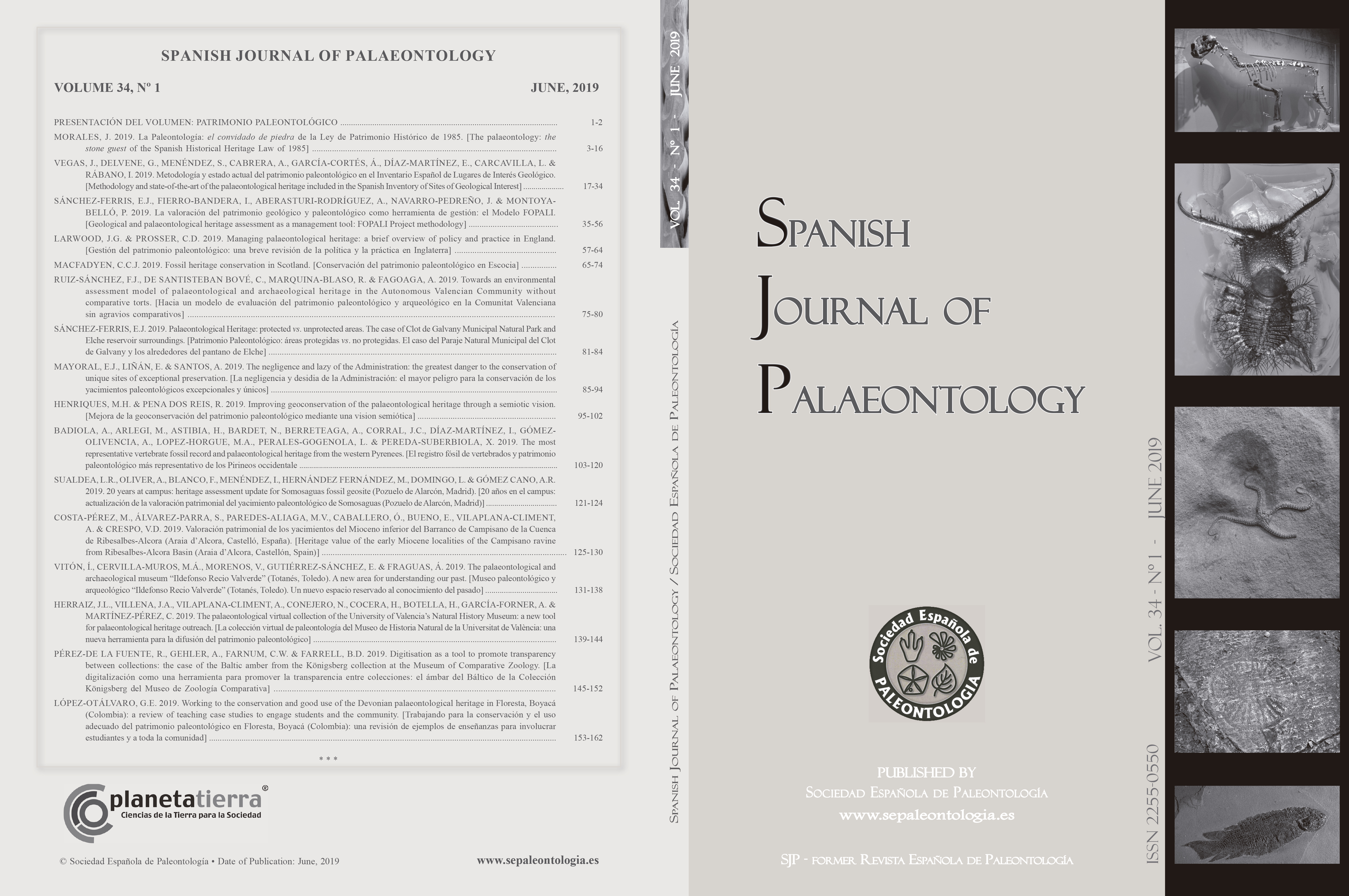Working to the conservation and good use of the Devonian palaeontological heritage in Floresta, Boyacá (Colombia): a review of teaching case studies to engage students and the community
DOI:
https://doi.org/10.7203/sjp.34.1.15299 Abstract
Abstract
The Floresta Massif, located in the Eastern Cordillera of Colombia, has a diverse and precious natural heritage. It is one of the areas that contains an exceptional palaeontological heritage of the Middle Devonian not only of Colombia, but also of South America. This heritage is represented by fossil specimens of marine fauna and terrestrial flora (correlated with North America and Europe) of the Floresta and Cuche Formations, respectively. Since 2004, actions made by several academic and research institutions, community and local government have introduced schoolchildren, teenagers and University students to art and science, and have promoted the conservation of palaeontological heritage as an essential, vibrant and relevant discipline. The high diversity of invertebrates, fishes and terrestrial plant fossils unearthed has promoted teaching and outreach projects, the creation of a small Museum of Palaeontology in the Floresta municipality, and the aim of developing a geotouristic ring road in the Floresta municipality and towns surrounding the Floresta massif. These initiatives are a lively example of conservation and good use of the palaeontological heritage of Floresta.
 Downloads
Downloads
Downloads
Published
How to Cite
-
Abstract664
-
PDF495
Issue
Section
License
![]()
This is an open-access article distributed under the terms of the Creative Commons Attribution 4.0 International License.



